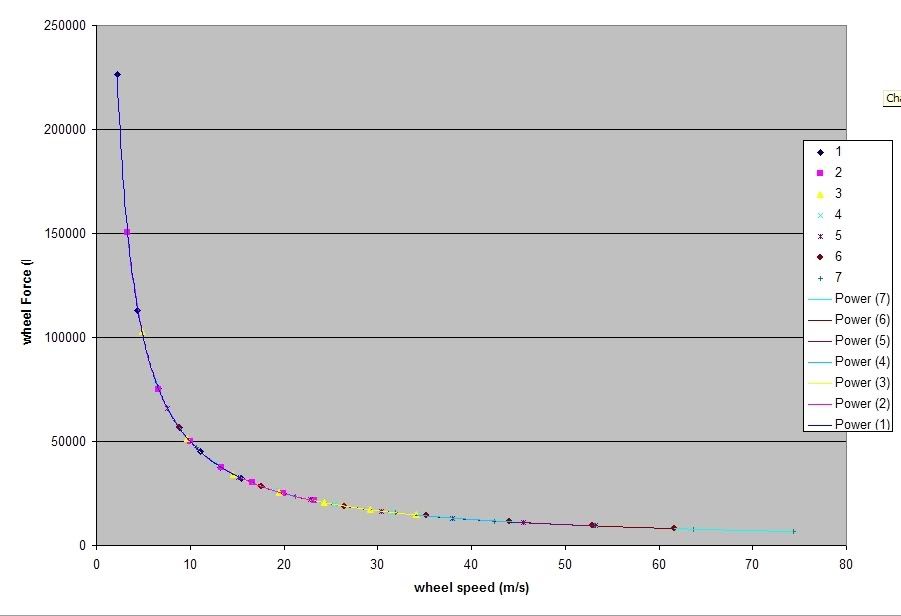machin wrote:Ringo: I see what you've done; You've confused the matter by showing engine speed on the x-axis...... please post a graph showing Force at the wheels (y-axis) against road speed (x-axis); what you'll find is that all the lines line up (one will be on top of the other), and they'll effectively create one curve.... What you'll see then is that you might as well chuck away all but top gear (this only applies to a constant power engine -not a peaky engine which only gives max power at a small range of speeds -in that case more gears is better).
Please?

Yes they will line up. Because they have the power in common.
However this is representative of all gears combined, not one gear ratio.
This is more like a CVT than a single gear ratio.
Maybe you have confused a CVT that has infinite gear ratios(within a range of course), with a single gear ratio.
The downfall of a single gear ratio is the fact that the engine does not rev till kingdom come.
If an engine revved to no end, then you could chose 1 gear, a low gear like first, instead of choosing 7th as a single gear to get your top speed.
Then you will get the torque you need to accelerate. However the F1 engine will only go to 12,000rpm so you will be force to chose a gear with weak acceleration.
More gears are better than 1, especially torque multiplying gears. If you go with one with a high torque multiplying factor, you engine better rev to the high heavens.



